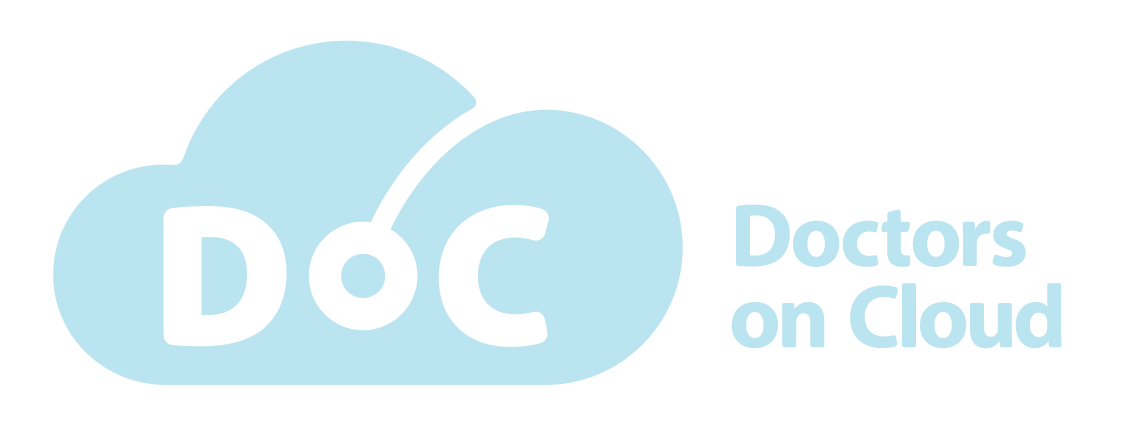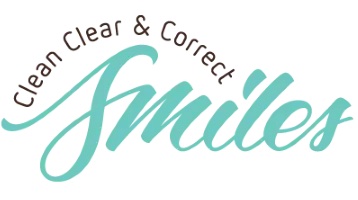Blog
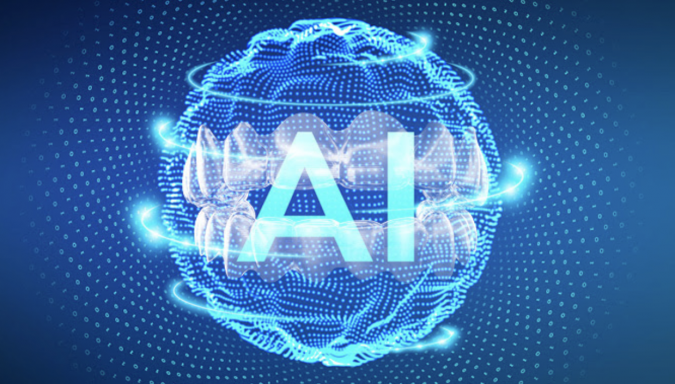
Artificial Intelligence (AI) in Digital Orthodontics: A powerful tool for the modern practitioner
BOSS Courses, Dr Katyal’s PublicationsA common objective throughout the history of Dentistry & Orthodontics, has been to increase both treatment and chairside efficiency (1, 2).
These have been the major catalysts for scientific research and the development of new technologies. The use of AI in Digital Orthodontics is in many ways the realization of this goal and much more than the next trend it is, in my opinion, the future of our industry.
The rise and use of AI
Technology, generally speaking, is designed to make our lives easier. It allows us to complete tasks more effectively and accurately, in less time. In the same way that Google Maps made navigation (almost) fool proof and email made letters redundant, the evolution of teledentistry has allowed us to treat our patients more effectively and revolutionised the practice of Dentistry worldwide.
The use of big data and Ai is the most recent trend sweeping across the medical industry and is central to many new technologies for the diagnosis, treatment and monitoring of a range of ailments and conditions. For us as dentists, this means a necessary shift in our mindset; away from a fascination with appliances towards the adoption of Ai and automation.
Remote monitoring, whilst still relatively new to the field and with varying levels of uptake due to a range of factors including economic validity, is the most common application of Ai technology within Orthodontics. It is the automated extension of the evolution of teledentistry that occurred in the 1990’s (3 – https://journals.sagepub.com/doi/abs/10.1177/1357633X16689433) and like the introduction of digital x-rays back then, remote monitoring is most definitely here to stay.
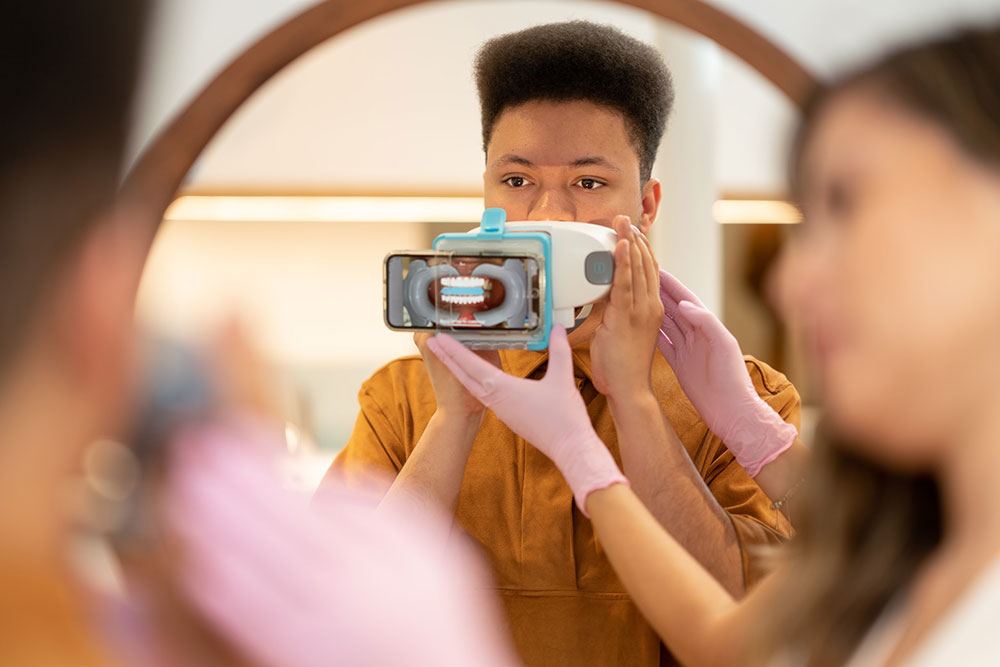
Dental Monitoring (DM) is the company at the forefront of Artificial Intelligence Remote Monitoring, otherwise known as AIRM (4). Being an early adopter of technology, I was one of the first practitioners in Australia to embrace DM in 2017 and have never looked back. The product consists of a smartphone application for the patient, an AI algorithm that does the heavy lifting, and a cloud-based Doctor Dashboard where patient progress can be reviewed and the uptake and usage of patients has been overwhelmingly positive. By using artificial intelligence (AI) to recognise photographs, videos and backgrounds to monitor gum health, teeth movement, rate of teeth movement and predictability of movement, this simple to use application has immense capabilities in providing greater accuracy and efficiency evaluating and prescribing patients (5).
One great example of the accuracy and application of DM technology is an extraction case study from my clinic, which is featured heavily in a peer reviewed study published in 2021; Outcomes of clear aligner treatment with and without Dental Monitoring: A retrospective cohort study (12), of which I was also part of the research team.
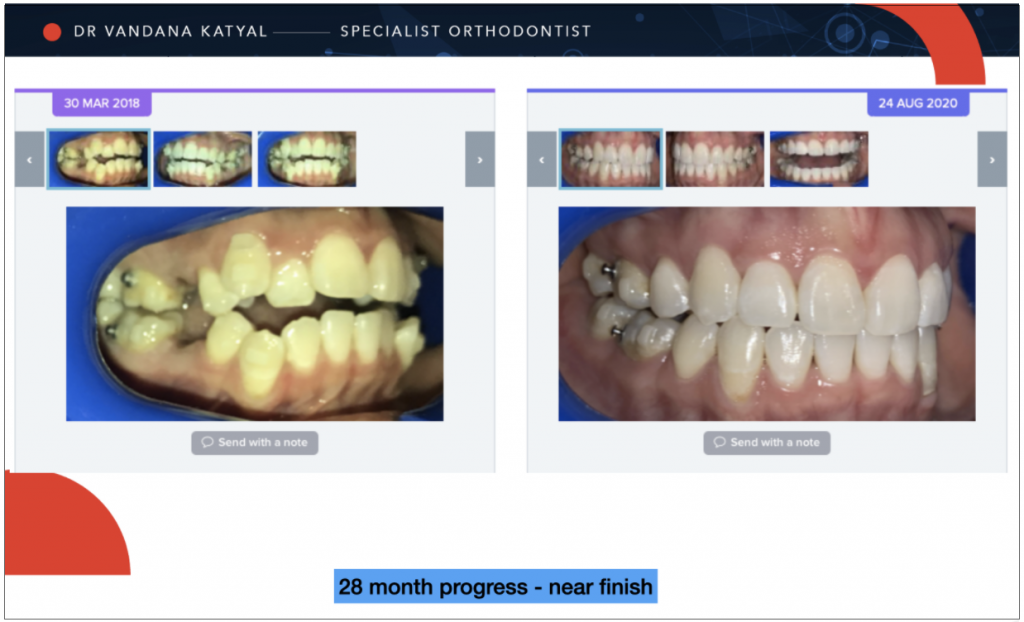
Throughout the treatment period, I utilised DM heavily to track the patient’s progress and adjust accordingly. Specifically, it allowed me to pick up and loss of anchorage early and make necessary adjustments to ensure the complex treatment plan remained on track and the patient had a positive experience.
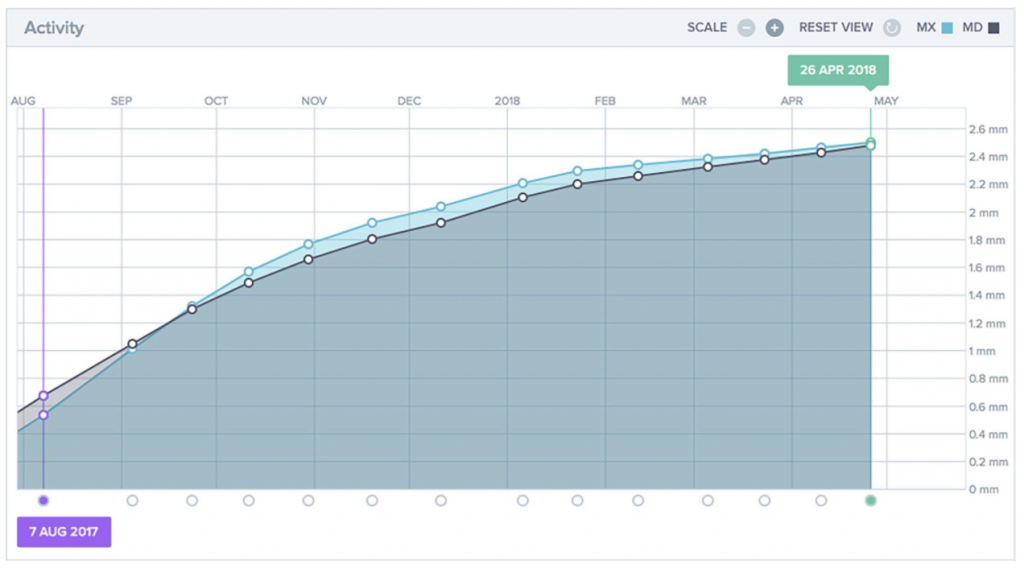
For me, AI and DM specifically, is an extra set of eyes that helps me make quicker, more informed decisions that result in more effective treatments for my patients.
Benefits for the Dentist, and the patient
Whilst the body of research into the use of remote monitoring and DM is still relatively new, early research and anecdotal evidence strongly indicates that the use of AI technology can lead to significant benefits for dentists and patients alike.
Reduction in Unnecessary & Total Appointments
Various studies have indicated the ability of AI technology to reduce both unnecessary and total appointments throughout a treatment period.
Research has suggested remote teledentistry could be a significant factor in reducing the inappropriate referral rate (6). Whilst in my own practice, I have noticed a significant decline in the amount of unnecessary appointments due to the ability to prescreen the patient and evaluate their progress before requesting an appointment.
It is only logical therefore that a decrease in unnecessary appointments would in turn lead to a reduction in the total number throughout a treatment period, a theory that was been supported by early research (7) and validated more recently a peer reviewed study conducted in 2020 that showed a reduction of 3.5 visits (33.1%) for patients who used DM as part of their treatment plan compared to a control group who did not, with no clinically significant reduction difference in tooth tracking or treatment duration (12).
Not only does this show that AI can increase treatment and chairside efficiency, but suggests that it can reduce societal cost and inconvenience for the patient and in-turn, increase patient satisfaction.
Increased Compliance & Improved Hygiene
In a recent blog, we discussed some of the more generic issues Dentist’s & Orthodontists face around treatment compliance. AI, and DM specifically, can act as a useful tool to not only assess and prescribe treatments, but to combat low compliance, particularly within younger demographics.
The Hawthorne Effect suggests individuals may modify an aspect of their behaviour in response to their awareness of being observed (8). Meaning in a clinical context, regular observations are likely to result in increased compliance (9).
Internal research conducted At CCC Smiles Orthodontics practice showed an increased compliance from 70% to 95% for prescribed aligner wear time, which as we know is likely to have a significant impact on treatment efficacy.
Moreover, multiple studies have shown that AIRM increased adherence to oral hygiene expectations, in part perhaps due to the Hawthorne effect, but also as a result of active reminders to both the Dentist & patient by DM technology (10).
Whilst increased compliance and improved oral hygiene are themselves useful in the implementation of the specific treatment, they also carry over into more general, longterm oral health of the patient.
Greater Treatment Flexibility & Easier Communication
Never has the ability to treat and communicate with patients in a flexible manner been so important as it is today.
Pre-pandemic anecdotal research highlighted scope and potential in remote monitoring when physical appointments were not possible (4), a theory that has been further supported during the COVID-19 pandemic (11).
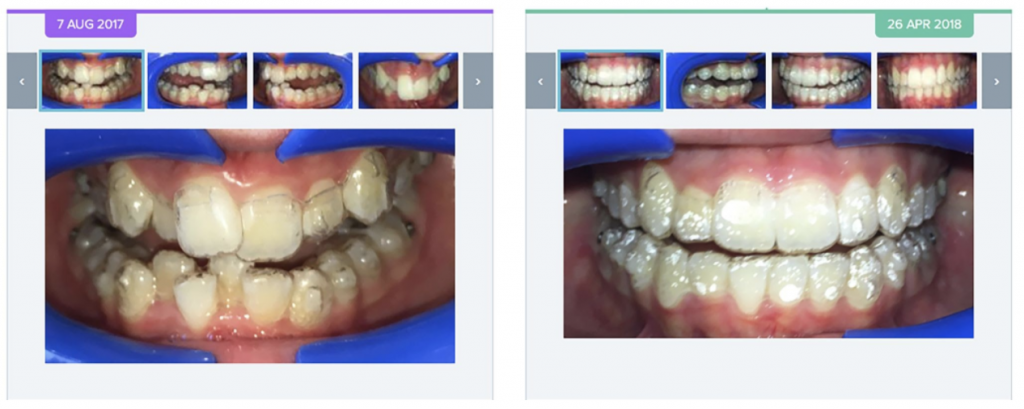
and treatment was completed 3 months later in March 2018.
Perhaps surprisingly, communication between the clinician and patient has also been shown to improve with remote monitoring (4). Allowing the clinician to monitor the patient more closely and communicate directly as and when required.
Regardless of the specific circumstances, the ability to closely and effectively monitor patients progress and communicate directly with them naturally reduces the reliance and necessity for physical appointments, paving the way for greater treatment flexibility moving forwards.
AI in practice
AI is a powerful tool for modern practitioners, but it’s use in practice should not forgo the fundamentals of medicine.
As a practitioner, I follow the golden rule from a legendary orthodontist, Prof. William Proffit, who said, ‘We should always keep the patient’s biology in mind.’ This means we should not push the envelope where it comes to tooth movement – we need to be biologically sensitive. Whilst the research suggests many benefits of the use of AI & remote monitoring, it’s influence on overall treatment length is yet to be shown. The function of technology such as DM is not to expedite biological mechanisms, but to accurately access their progress and adjust where necessary.
Secondly, and most importantly, I use evidence-based research when designing my treatment plans to ensure that my approach is theoretically and technically correct, prior to treatment beginning. This is the foundation to any successful treatment and whilst DM is extremely useful in ensuring that plan is implemented and complied with effectively, it should be used as a tool to detect problems and track progress, not to determine the treatment itself.
The BOSS Diploma in Digital Orthodontics empowers students to leverage technology to enhance their practice, through a curriculum grounded in biological principles and scientific research. By encouraging students to think laterally and treat cases on an individual basis, rather than a uniformed approach, we enable them to utilize tools such as AI & DM effectively.
In book Clinical Handbook of Orthodontics, I outline the necessary clinical protocols for Dentists and Orthodontists to begin utilizing AI technologies within their practice and leverage them in order to truly increase treatment and chairside efficiency in their practices.
This game changing e-book is one of the many resources made available for new BOSS Diploma students upon enrollment. You can test drive our e-learning platform (voted by 3 out of 4 students as their favourite feature) for 5-days and taste how it feels to learn the BOSS way for FREE.
BOSS Graduate Diploma 7-Day Free Trial
References
- Rinchuse DJ, Cozzani M. Effectiveness and efficiency in clinical orthodontic practice. Int Orthod 2015;13:507-24.
- Vaid NR. Up in the Air: orthodontic technology unplugged! APOS Trends Orthod 2017;7:1-5.
- Estai, Mohamed, et al. “A systematic review of the research evidence for the benefits of teledentistry.” Journal of telemedicine and telecare 24.3 (2018): 147-156 – https://journals.sagepub.com/doi/abs/10.1177/1357633X16689433
- Hansa, Ismaeel, et al. “Artificial Intelligence Driven Remote Monitoring of orthodontic patients: Clinical Applicability and Rationale.” Seminars in Orthodontics. WB Saunders, 2021.
- Morris, Ryan S., et al. “Accuracy of Dental Monitoring 3D digital dental models using photograph and video mode.” American Journal of Orthodontics and Dentofacial Orthopedics 156.3 (2019): 420-428.
- Mandall, N. A., et al. “Teledentistry for screening new patient orthodontic referrals. Part 1: A randomised controlled trial.” British dental journal 199.10 (2005): 659-662.
- Hansa I, Semaan SJ, Vaid NR, Ferguson DJ. Remote monitoring and ”Tele-orthodontics”: concept, scope and applications. Semin Orthod 2018;24:470-81.
- Sedgwick, P. and N. Greenwood,Understanding the Hawthorne effect. Bmj,2015. 351: p. H4672.
- McCarney, Rob, et al. “The Hawthorne Effect: a randomised, controlled trial.” BMC medical research methodology 7.1 (2007): 1-8.
- Zotti, Francesca, et al. “Usefulness of an app in improving oral hygiene compliance in adolescent orthodontic patients.” The Angle Orthodontist 86.1 (2016): 101-107.
- Maspero, Cinzia, et al. “Available technologies, applications and benefits of teleorthodontics. A literature review and possible applications during the COVID-19 Pandemic.” Journal of clinical medicine 9.6 (2020): 1891.
- Hansa, Ismaeel, et al. “Outcomes of clear aligner treatment with and without Dental Monitoring: A retrospective cohort study.” American Journal of Orthodontics and Dentofacial Orthopedics 159.4 (2021): 453-459.



